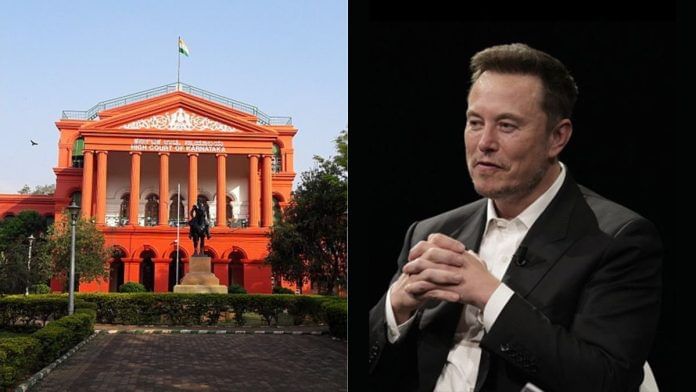New Delhi: The Karnataka High Court on Wednesday dismissed a batch of petitions by micro-blogging site X (formerly Twitter) and Digipub, a collective of 92 media organisations, which raised concerns over freedom of speech and transparency in the aftermath of the Centre introducing its ‘Sahyog’ portal last year.
In doing so, a bench of Justice M. Nagaprasanna said, “The march of civilisation has borne witness to the inescapable truth that information and communication, its spread or its speed, has never been left unchecked and unregulated.”
Saying that information has always been regulated, whether in the early days through messengers or post, or in the digital age of WhatsApp, Instagram and Snapchat, the court said that effectively, all forms of information have been regulated by regimes, both globally and locally.
Rejecting the petitioner’s reliance on Article 19(1) (A) of the Constitution, the court said that the right to free speech and expression comes with its own set restrictions under Article 19(2).
“Article 19 of the Constitution of India, noble in its spirit and luminous in its promise, remains nevertheless a charter of rights conferred upon citizens only. The petitioner, who seeks sanctuary under its canopy, must be a citizen of the nation, failing which, the protective embrace of Article 19 cannot be invoked,” the court said.
Saying that the ‘Sahyog’ portal is a “beacon of cooperation” between the citizen and the intermediary, and a mechanism through which the state endeavours to combat the growing menace of cybercrime, the court said that to challenge its validity is to misunderstand its purpose.
“Hence this challenge is without merit,” the court said, likening social media to a modern amphitheater of ideas that cannot be left in a state of anarchic freedom.
“Regulation of information in this domain is neither novel nor unique. The United States of America regulates it. Every sovereign nation regulates it and India’s regulation likewise cannot by any stretch of constitutional imagination be branded as unlawful,” the court ruled.
Although the judgment was reserved on 29 July, the court has, nearly two months later, ruled that the portal, is an instrument of public good.
Pointing out that unregulated speech under the guise of liberty becomes a licence for lawlessness, the court said that regulated speech, by contrast, preserves both liberty and order, the twin pillars upon which democracy must stand.
Warning those who treat the Indian marketplace as a mere playground where information can be disseminated in defiance of statutes or without regard to legality, the court said that as of now, content on social media needs to be regulated and its regulation is “a must”, especially in cases concerning offences against women.
The portal, introduced in October last year by the Ministry of Home Affairs, allows the government or any of its agencies to order takedown of any content posted on the intermediary’s website, by a third party. Refusal to comply with the takedown order would make the intermediary personally liable for such content.
Section 2(1)(w) defines an “intermediary” under India’s Information Technology (IT) Act, 2000, as any person or entity, who on behalf of another, receives, stores, or transmits electronic records, or provides services related to these records. Examples of such intermediaries include social media sites, e-commerce platforms and telecom service providers, among others.
Twitter’s challenge
In the present case, the court was acting on a challenge to the constitutional validity of the Central government’s ‘Sahyog’ Portal, which was set up in October, last year, by the Ministry of Home Affairs (MHA), in collaboration with the Ministry of Electronics and Information Technology, to automate the process of sending notices to intermediaries by the government or its agencies under IT Act, 2000.
In turn, such notices will allow the removal of any information, data, or communication link, if it is used to commit an unlawful act. Essentially, the portal sought to bring together all authorised agencies and intermediaries like Twitter (now X) or Whatsapp, among others, on one platform, for ensuring immediate action, like removing or disabling access to such unlawful online data, or information. The portal’s official website says that it will help achieve a “safe cyber space” for Indian citizens.
However, in the present case, Twitter challenged the constitutional validity of the government portal, which allows the government to request takedown of content posted on websites by third-party users, while labelling the portal as a “censorship portal”, which creates a parallel mechanism to Section 69A of the IT Act, which allows the Centre to block access to online content for reasons like national security, public order, and maintaining friendly relations with foreign states.
In its plea, Twitter also said that the portal would allow arbitrary censorship based on the whims of the executive, while adding that Section 69A already contains this power to take down content, albeit with safeguards such as recording the reasons for the takedown request in writing.
(Edited by Viny Mishra)
Also read: Social media bans backfire. Nepal has a lesson for India






